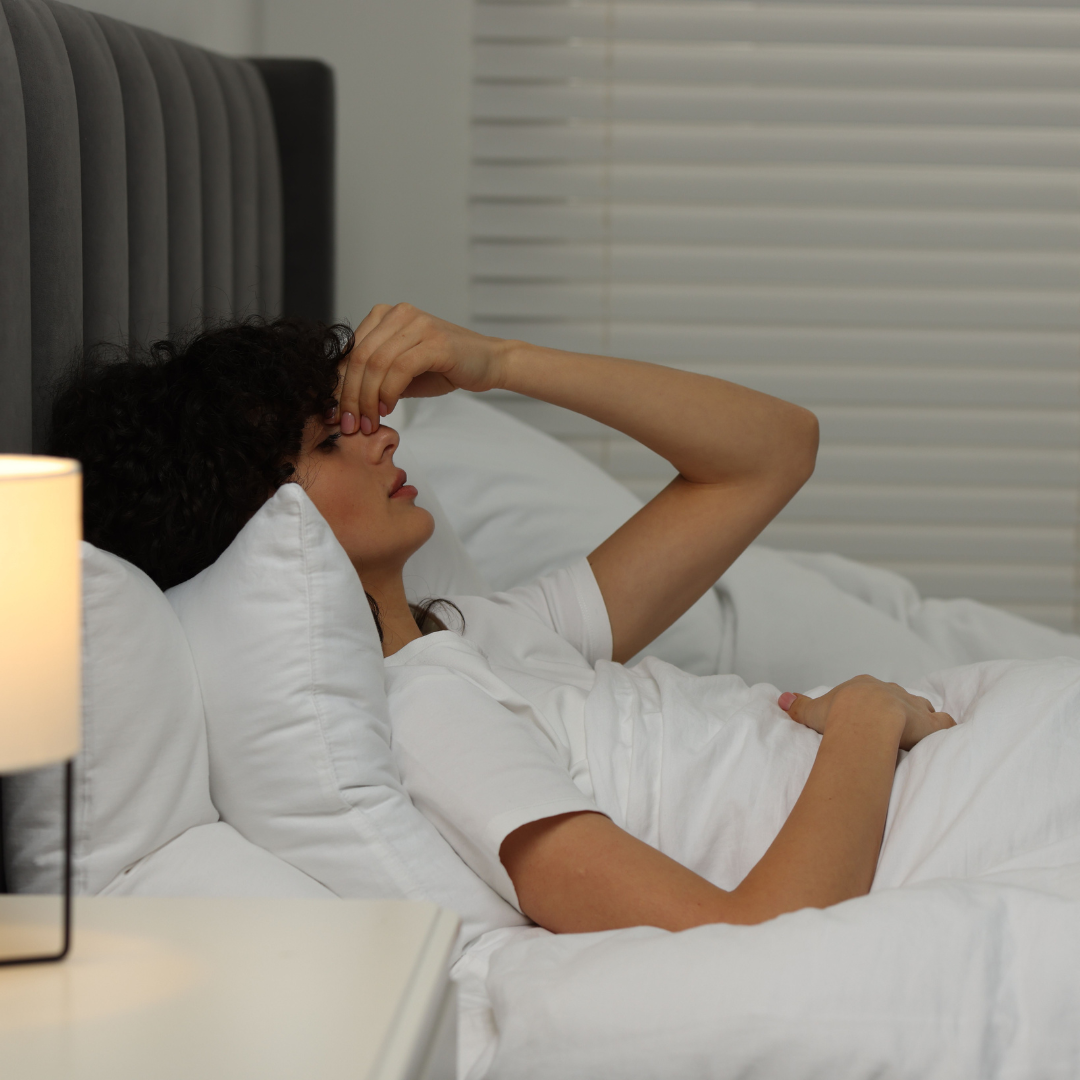Compression Garments for POTS: How They Reduce Dizziness, Fatigue, and Brain Fog
Living with POTS and Looking for Relief
If you live with postural orthostatic tachycardia syndrome (POTS), you know how much simple, everyday movements can feel like uphill battles. Standing up to make breakfast, walking through the grocery store, or even getting dressed can trigger dizziness, a racing heart, brain fog, and overwhelming fatigue.
Many people try increasing fluids, adding salt, pacing their activities, and taking medications, but symptoms can still interfere with daily life. One of the most effective non-drug tools for symptom management is something you can wear: compression garments.
Research supports compression therapy as a safe, accessible option for many POTS patients. It can reduce heart rate spikes, improve blood flow, and make it easier to stay upright. This guide will walk you through how compression works, what types are best, how to choose the right garment for you, and how to wear them comfortably throughout the year.
What Are Compression Garments for POTS and How Do They Work?
Compression garments are specially designed clothing that apply gentle, consistent pressure to your legs, abdomen, or full lower body. In a healthy circulatory system, blood quickly adjusts to changes in posture. In POTS, however, blood pools in the lower half of the body when you stand. This pooling reduces blood returning to the heart, which lowers stroke volume. To compensate, your heart beats faster, sometimes dramatically, in an effort to maintain adequate blood flow to your brain.
This rapid increase in heart rate is a defining symptom of POTS and can cause dizziness, lightheadedness, fatigue, brain fog, palpitations, nausea, and shakiness.
By applying external pressure, compression garments help push blood from the legs and abdomen back toward the heart. This improves venous return and stroke volume, reduces the compensatory heart rate increase, and helps maintain more stable blood pressure when standing.
Benefits of Compression Therapy for Orthostatic Intolerance and POTS Symptoms
Multiple studies confirm the benefits of compression for POTS.
In 2021, the Journal of the American College of Cardiology reported that waist-high compression reduced heart rate and improved symptom scores in adults with POTS.
Pediatric research published in The Journal of Pediatrics found similar improvements in children and adolescents using abdominal and lower-body compression.
Expert organizations, including The Heart Rhythm Society, list compression therapy as a recommended part of non-pharmacologic treatment for POTS.
These benefits are not just limited to heart rate control. Many patients report improved tolerance for daily activities, fewer post-exertional “crashes,” and better cognitive function when compression is worn consistently.
Best Compression Garments for POTS Patients
Compression garments can help reduce a variety of symptoms associated with orthostatic intolerance. The most commonly improved symptoms include:
Dizziness and lightheadedness when standing
Rapid or pounding heartbeat upon changing position
Fatigue that worsens with upright activity
Brain fog, difficulty focusing, and poor concentration
Nausea and shakiness linked to orthostatic stress
While compression garments are not a cure for POTS, they can be an important part of a larger symptom management plan.
How to Choose the Right Compression Garment
The type and amount of compression matter. Studies and clinical experience suggest the following:
POTS Compression Stockings and Tights (30–40 mmHg)
Waist-high compression tights or full-body garments providing 30 to 40 mmHg pressure are the most effective at reducing POTS symptoms. They support both the legs and abdomen, preventing blood pooling in multiple areas.
Abdominal Binders for POTS and Blood Pooling
These are useful if full-leg compression feels uncomfortable or restrictive. They focus pressure on the abdomen, which plays a significant role in venous return.
Compression Socks for POTS: Are They Enough?
Knee-high socks or calf sleeves are easier to find and wear but may not provide as much relief on their own because they do not address abdominal pooling.
Heat-Friendly Compression Garment Tips for POTS and Summer Wear
If you have heat intolerance, breathable, moisture-wicking fabrics are important. Open-toe or lighter compression options may be more comfortable in warmer months.
Affordable and DIY Compression Solutions for POTS Patients
For those on a budget, abdominal binders, athletic compression shorts, or layered leggings with compression socks can provide similar benefits at a lower cost. Secondhand or gently used medical-grade garments from reputable sellers can also be a cost-saving option.
When to Wear Compression Garments for POTS Symptom Relief
Wearing compression consistently is key to getting results. Many people benefit most from using them:
In the morning, when symptoms are often most intense
After meals, when blood flow shifts toward digestion
During prolonged standing, walking, or other upright activities
On days when symptoms are flaring more than usual
It is generally best to avoid wearing compression garments overnight unless your healthcare provider specifically recommends it.
How to Care for and Extend the Life of Compression Garments
Proper care helps maintain their effectiveness and extend their lifespan.
Wash in cold water using a mild detergent to preserve elasticity
Avoid fabric softeners, which can damage elastic fibers
Air dry away from direct heat to prevent shrinkage and material breakdown
Rotate between two or more garments to reduce wear and stretching
With the right care, a quality compression garment can last several months or more.
Common Challenges with Compression Garments and How to Overcome Them
Some people find compression therapy uncomfortable or difficult to maintain. Common issues include:
Heat and Sweating
Choose lightweight, moisture-wicking materials for summer use. Open-toe styles or partial compression may also help.
Difficulty Putting Them On
Garments with zippers, step-in designs, or donning gloves can make dressing easier, especially if you have joint hypermobility or fatigue.
Self-Consciousness
Many brands now offer compression tights and leggings that look like regular athletic wear, making it easier to wear them outside the home.
Integrating Compression Garments into a Daily POTS Management Plan
Compression garments are most effective when they are part of a broader symptom management strategy. Many people combine them with:
Increased fluid and salt intake, under medical guidance
Recumbent or aquatic exercise programs for gradual reconditioning
Pacing and planning activities to prevent overexertion
Medications such as beta-blockers or fludrocortisone, if prescribed
Some studies suggest compression can improve the effectiveness of certain medications by enhancing circulation, potentially reducing the need for higher doses.
FAQ: Compression Garments for POTS and Orthostatic Intolerance
How much mmHg compression is best for POTS?
Most research supports 30 to 40 mmHg for maximum benefit, although some people do well starting with lower levels and increasing as tolerated.
Are compression socks enough for POTS?
They can help with lower leg pooling but are generally less effective than waist-high or abdominal compression, which address multiple areas of blood pooling.
Can compression help brain fog?
Yes. By improving blood flow to the brain, compression garments can help reduce brain fog and improve concentration.
What is best for summer or heat intolerance?
Lightweight, breathable fabrics, moisture-wicking technology, and open-toe designs can make compression more comfortable in hot weather.
Are there affordable compression options?
Yes. Abdominal binders, athletic compression shorts, and secondhand medical-grade garments can be effective budget-friendly choices.
Compression garments are a low-risk, research-supported tool for managing POTS symptoms. They work by improving circulation, reducing orthostatic tachycardia, and helping you stay upright with fewer symptoms. The right garment, worn consistently, can make a meaningful difference in your daily quality of life.
If you are unsure where to start, begin with a comfortable, heat-friendly option and track your symptoms to see how your body responds. Over time, you can adjust pressure levels, styles, and wear times to fit your needs.
You do not have to navigate POTS alone. For more practical, research-backed strategies, join our free community The Garden for weekly office hours and real-time support.
Further Reading:
Compression Garment Reduces Orthostatic Tachycardia and Symptoms in Patients With POTS
A Community-Based Trial of Commercially Available Compression Tights in Patients With POTS
Abdominal Compression as a Treatment for Postural Tachycardia Syndrome
Postural Tachycardia Syndrome: Clinical Presentation, Aetiology, and Management
Compression Clothing Effectiveness: Legs + Abdomen vs Legs Only































